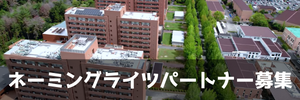(English announcement can be found in the latter half of this notice.)
広島大学バイオマスプロジェクト研究センターと中国地域バイオマス利用研究会の共催で広島大学バイオマスイブニングセミナーを開催しています。バイオマスに関する基本的な考え方から最先端の情報までをカバーして、この地域におけるバイオマスの活動に資することを目的とするものです。第53回を以下の日程で開催しますので、ご参集下さい。
日時 2017年5月18 日(木)16:20~17:50
会場 広島大学東広島キャンパス工学部110講義室
http://hiroshima-u.jp/eng/access/lectureroom
http://hiroshima-u.jp/eng/access/building
http://hiroshima-u.jp/access/
プログラム
解説 広島大学大学院工学研究科 教授 松村 幸彦
講演 広島大学大学院先端物質科学研究科 研究員 三浦 豊和
「褐藻からのバイオメタン生産」
大型藻類は、海洋で栽培できることから陸上で栽培される食糧と競合しない、リグノセルロースと比較して分解しやすいことから、バイオメタン生産の原料として有望です。本研究では、塩分含有大型藻類からのバイオメタン生産を、塩分無希釈条件下で、褐藻を基質とし、海洋由来微生物源を使用して行いました。
講演 広島大学大学院先端物質科学研究科 M2 中井 昇太
「低級有機酸資化性細菌を用いた油脂生産とバイオマス利用の可能性」
海洋性の低級有機酸資化微生物Nitratireducter sp.OM-1株を用いて、大型藻類などのバイオマスからバイオ燃料となりうる油脂を生産することで、海洋国である日本でのバイオリファイナリー技術の確立を目指しています。
OM-1株は窒素飢餓のストレス条件下で細胞内に油脂を約60%蓄積します。そこで、本研究では、窒素飢餓下での培養条件の検討を行うことで、油脂生産量の向上に取り組みました。
講演 広島大学大学院先端物質科学研究科 M1 竹村 海生
「Moorella thermoaceticaの酢酸合成経路改変による細胞内ATPプール量への影響」
合成ガス資化ホモ酢酸菌であるMoorella thermoaceticaの酢酸合成経路改変を行い、フルクトースからエタノールを生産するdpdul::aldh株の育種に成功しました。しかし、dpdul::aldhはH2-CO2培養では生育できませんでした。その原因はATP供給量の低下と考えられたため、基質の違い、及び、酢酸合成経路改変による細胞内ATPプール量への影響を調べました。その結果、野生株のH2-CO2培養、dpdul::aldhのフルクトース培養の細胞内ATPプール量は、野生株のフルクトース培養と比較して、それぞれ1/5程度まで低下していました。
司会 広島大学大学院工学研究科 客員研究員 Obie FAROBIE
なお、18:00より意見交換会(参加費 800円)を開催します。ご都合の付く方はこちらにもご参加下さい。
The 53rd Hiroshima University Biomass Evening Seminar
(The 13th Hiroshima University ACE Seminar)
Biomass Project Research Center, Hiroshima University, and HOSTY Association are co-organizing the Hiroshima University Biomass Evening Seminar. This seminar covers topics from the fundamentals of biomass to the latest information so that it can contribute the activities on biomass in this district. The 53rd seminar will be held as follows. Please join.
Date & Time:Thu .18 May., 2017 16:20-17:50
Place: Engineering 110 Lecture Room, Higashi-Hiroshima Campus, Hiroshima University
http://hiroshima-u.jp/eng/access/lectureroom
http://hiroshima-u.jp/eng/access/building
http://hiroshima-u.jp/access/
<Program>
Commentary: Yukihiko MATSUMURA
Professor, Institute of Engineering, Hiroshima University
Lecture: Toyokazu MIURA
Reseacher , Graduate School of Advanced Sciences of Matter, Hiroshima University
“Biomethane production from brown algae”
Marine macroalgae are receiving increasing attention as a feedstock for biomethane production because they do not compete with food for farm land and are less resistant to degradation than lignocellulosic feedstocks. In this study, halophilic microbes were used toproduce methane from brown algae, which contain high levels of salt, without dilution ofsalinity.
Lecture: Shota NAKAI
M2 Student, Graduate School of Advanced Sciences of Matter, Hiroshima University
“Lipid production by using short-chain fatty acid-assimilating microorganism and marine biomass.”
Using a marine low organic acid-assimilating bacterium Nitratireducter sp. OM-1 strain, we are aiming to establish biorefinery technology for biofuel production from biomass such as marine macroalgae.
Strain OM-1 can accumulate oils at 60% of dry cell weight intracellular under the stress condition of nitrogen starvation. In this research, we studied on various culture conditions to improve oil production.
Lecture: Kaisei TAKEMURA
M1 Student, Graduate School of Advanced Sciences of Matter, Hiroshima University
“Effect of modification of acetate synthesis pathway on intracellular ATP pool in Moorella thermoacetica ”
Moorella thermoacetica ATCC39073 that can grow on H2-CO2 gas and produces acetate. We modified acetic acid synthesis pathway in M. thermoacetica, and succeeded to breed the mutant strain dpdul::aldh that produced ethanol from fructose. However, the mutant didn’t grow under H2-CO2 gas. We speculated that the decrease in supply of ATP due to the destruction of acetic acid synthesis pathway resulted in the no growth on H2-CO2. To prove the assumption, we measured intracellular ATP pool in the wild type grown on H2-CO2 gas and fructose, and the mutant strain dpdul::aldh grown on fructose. As speculated, the intracellular ATP pools in the wild type with H2-CO2 gas and the mutant with fructose were one-fifth than that in wild type with fructose.
Chair: Obie FAROBIE
Visiting Reseacher, Institute of Engineering, Hiroshima University
We will hold the discussion meeting from 18:00 (800 JPY needed). Join this meeting, too if you are available.


 Home
Home




